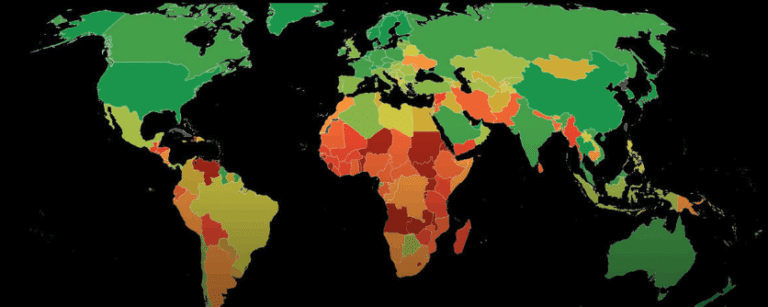This roundtable report reflects the authors’ understanding of key points made in the course of the discussion. It does not necessarily represent the views of the Center on Global Energy Policy. The summary may be subject to further revision.
Contributions to SIPA for the benefit of CGEP are general use gifts, which gives the Center discretion in how it allocates these funds. More information is available on our Partners page. Rare cases of sponsored projects are clearly indicated.
On September 22, 2022, the Center on Global Energy Policy (CGEP) at Columbia University held a private roundtable to discuss the state of energy in India. The authors compiled the following summary of key issues raised during the event.
The event brought global experts together with practitioners from India, helping inform the global community of energy sector developments and priorities in India. The key focus of the roundtable was to review the state of energy in India, as presented by researchers at CGEP, and the immediate need for balancing energy security and energy transition priorities in the country. In addition to the presentation on energy, climate, and environmental policies in India—situating the country’s energy transition—participants discussed what they think India’s transition should look like, while noting India’s relevance in the global order.
Roundtable participants included senior policy makers, corporate executives, civil society representatives, analysts, and experts from academia and think tanks. The event was held as part of a CGEP research emphasis on India’s energy transition, with such dialogues among informed and interested parties expected to recur semiannually.
One speaker noted how the energy dialogue synced well with the then ongoing 77th UN General Assembly, given the theme and agenda of that meeting was driven by a number of interlinked global crises including COVID-19, the war in Ukraine, climate change, and macroeconomic headwinds, all of which will have an impact on India’s energy transition.[1] This roundtable is also timely given the broad and expansive partnership between India and the United States through the US-India Climate and Clean Energy Agenda 2030 Partnership. Launched by President Biden and Prime Minister Modi in 2021, this program aims to advance shared climate and clean energy goals and includes two tracks: the Strategic Clean Energy Partnership and the Climate Action and Finance Mobilization Dialogue.[2]
State of Energy in India
The CGEP researchers’ presentation noted that as India’s population and GDP have grown over the past two decades, so have its energy consumption and emissions. In this context, they documented the significant policy choices India has made in its transition toward a more inclusive and sustainable energy system over the last few years. The presentation reported on progress in eliminating energy poverty and universalizing access to energy, efforts to decouple economic development from growth in energy demand, India’s aspiration to achieve energy independence by 2047, and commitments to enhance emissions reductions made at the United Nations Climate Change Conference (Conference of the Parties, or COP26) in Glasgow in 2021.
A speaker noted that India seeks to achieve these reductions through programs such as bio-conservation,[3] a National Hydrogen Mission,[4] and production-linked incentives schemes for solar panels.[5] Moreover, the speaker said that the Indian government has engaged with other countries such as Germany for clean energy programs,[6] especially through the International Solar Alliance,[7] and is working with Sweden and the World Economic Forum on a Leadership Group for Industry Transition that aims to “gathers countries and companies that are committed to action to achieve the Paris Agreement.”[8]
Three themes emerged in the participant discussion: energy access, energy independence, and climate policy and commitments.
Energy Access
Energy access in the form of universal access to electricity as well as increasing access to modern cooking fuels in the form of liquified petroleum gas (LPG, a mix of butane and propane) was a core theme. One participant described the universalization of electricity access through the 2017 launch of a Saubhagya scheme to provide electricity connections for still “unconnected” households in rural and urban areas, with an outlay of $2.2 billion over five years. About 28.2 million such households have been provided electricity connections, reportedly achieving connectivity for all households in the country.[9] The Ujjwala scheme launched in May 2016 provided LPG to rural households that were otherwise using traditional cooking fuels such as firewood, coal, cow-dung cakes, etc. Against a target of 50 million new LPG connections, 95 million new connections have been achieved to date.[10]
As India’s per capita electricity consumption grows, especially with new households being connected to the grid, electricity generation will need to ramp up. Here, the role of associated factors such as transmission and distribution capacity, grid stability, investments required, and land acquisition were discussed. According to some participants, distribution sector challenges have been an obstacle to growth of the electricity sector, but recent plans to increase competition and financial sustainability of distribution agencies, such as through the proposed Electricity Act 2003 amendments,[11] would help. Participants noted the role of Solar Energy Corporation of India as a good intermediary between renewable electricity generation companies and distribution companies, saying its support has lowered the risks of nonpayment to generation companies, resulting in lower equity costs and hence in lower tariffs.
Energy Independence
The CGEP researchers’ presentation reported that India has set itself a target of energy independence by 2047. Elements of this announcement include increasing the share of gas in the energy mix, reducing diesel consumption by railways with greater electrification, and a National Hydrogen Mission with a target to produce 5 million metric tons of green hydrogen by 2030.[12] India has also introduced a number of initiatives to increase the domestic production of coal,[13] and oil and gas[14] to reduce its import dependence.
A participant noted four major energy transitions for India till 2047, when the country wishes to achieve energy independence. The first one is happening with electrification and increased access to clean cooking fuel. The second transition is rapid urbanization and the resultant faster increase in energy demand. The third is a greater role for global markets in domestic energy due to greater integration. The final transition mentioned by the participant is the shrinking carbon budget and hence the need to decarbonize the energy system faster. The same panelist noted three maxims of energy transitions: 1. attaining energy security and independence by having a diversity of sources of energy, 2. developing an energy leapfrog, that is, shifting from traditional energy sources such as wood and charcoal directly to renewables without building a large fossil fuel infrastructure in between, and 3. differentiating between indigenization and resilience of supply chains to allow for optimal sourcing.
After the Russian invasion of Ukraine, many feel a heightened need to find alternative energy sources and diversify suppliers. A speaker noted that an uptick in energy concerns also reflects the risks in meeting rising energy needs in line with rising prosperity. A participant asked what constitutes a risk-adjusted energy transition for India? Another noted that the energy consumption of Indian citizens is much smaller than it is for those in Europe, and hence a supply shock could have more significant developmental impact in India.
Critical minerals were discussed, especially in terms of the impact of China’s current dominance of them on energy independence and security. Participants saw a need for diversification of the supply chain for critical minerals.
Attendees then turned to the viability of Indian efforts to establish a solar modules industry: while the technology is mostly open source and readily available, the longer gestation period for establishment of the Indian semiconductor and solar panel industry compared to China makes competition difficult. Participants hope a strong private-sector presence in renewable energy will extend to the emerging circular economy utilization of e-waste as a source for rare and critical elements.
While national and state electric vehicle (EV) policies are still evolving, a participant questioned whether the current energy mix used to charge them is truly green. A speaker focusing on EV as a measure to reduce dependence on imported liquid fuels suggested the government could mandate that renewable energy companies start giving electricity to charging companies. The speaker noted that access to a robust fast and ultrafast charging infrastructure network within and outside city limits and along highways would likely boost adoption of EVs. In addition, the speaker said that providing lower interest rates to fleet operators purchasing electric vehicles would be important for increasing EV adoption. Fleet operators and e-commerce companies are already setting internal targets for higher EV purchases; a financial incentive that lowers the cost of EVs would be helpful in realizing these targets. An India-specific example would be to bring EVs under the Reserve Bank of India priority sector lending ambit, which could increase investor confidence and banks’ willingness to lend. A participant said federal and state departments in emerging markets, especially India, need to extend fiscal benefits to consumers purchasing commercial electric four wheelers in order to increase the rate of adoption.
Finally, participants said there is much scope for the growth of nuclear energy to provide base-load power certainty as a substitute for fossil fuels in the absence of credible storage capabilities for other forms of renewable power. India would need to continue to engage with the international community to find solutions to its exclusion from the global nuclear electricity market, while also finding opportunities to reassure international nuclear equipment and material suppliers of the viability and stability of the Indian market.
Climate Policy and Commitments
Attendees discussed India’s progress on its Paris commitments and its reiteration of climate goals in last year’s COP26 in Glasgow, including a 500 gigawatt (GW) renewable target and a 1 billion ton greenhouse gas reduction. There was a lot of excitement among participants about the growth in renewable energy in India, but a reminder that the fossil fuel contribution in energy production has not decreased dampened the enthusiasm. Attendees mentioned the broad climate discourse and participation at macro as well as micro levels in India, such as establishing a campaign to save topsoil, arresting erosion in the Majuli riverine island forest, hosting the International Solar Alliance, and launching the Coalition for Disaster Resilient Infrastructure.
Participants also discussed financing the energy transition. The consensus was that there is a need for developing innovative financing and investment tools in the full energy ecosystem, including investment in relatively developed technologies and new technologies as well. While there are a range of new investing options like green bonds, attendees weren’t sure whether these were comparable to or cheaper than traditional financing options. Participants said multilateral development banks need to make a greater effort to mitigate risks and reduce the effective risk premium and interest rates of clean energy investments in the country.
Another participant questioned whether land use continues to be a constraint. An attendee responded that procuring land for solar energy projects remains relatively easy: four to five acres of land are sufficient for a 1 megawatt solar energy project, and land in the western state of Rajasthan would be enough to meet the country’s 500 GW target. However, a participant noted that land acquisition remains difficult for wind energy because of resistance from agrarian societies, inadequate compensation measures, and lack of official ownership records. But if there are multiple wind connections, the cost of storage is reduced, changing costs overall.
Additionally, challenges with transmission infrastructure continue; participants said the government cannot build it fast enough to keep up with electricity demand and the proposed growth in generation capacity.
Conclusions
Roundtable attendees said India has made significant policy choices in its transition toward a more inclusive and sustainable energy system over the last few years but that substantial progress in energy access and efficiency is still lacking. Participants highlighted two major objectives of India that they say require more policy support, private financing, and corporate action: achieving a just and efficient energy transition to a decarbonized economy and securing energy independence. Other issues participants said would need to be monitored over the next few years include: the significant share of fossil fuels in energy, the need for energy alternatives, diversification of sources in view of the war in Ukraine, the transition not being predictable and linear, risks associated with the transition, and the importance of policy support.
Notes
[1] United Nations, “Overview,” 2022, https://www.un.org/sustainabledevelopment/unga-high-level-week-2022/.
[2] US Department of Energy, “U.S.-India Joint Statement on Launching the U.S.-India Climate and Clean Energy Agenda 2030 Partnership,” April 22, 2021, https://www.state.gov/u-s-india-joint-statement-on-launching-the-u-s-india-climate-and-clean-energy-agenda-2030-partnership/.
[3] Government of India, Ministry of Environment, Forest, and Climate Change, “Year End Review: Ministry of Environment, Forest, and Climate Change,” Dec. 29, 2021, https://pib.gov.in/PressReleasePage.aspx?PRID=1786057.
[4] Government of India, Ministry of Power, “Green Hydrogen Policy,” Feb. 17, 2022, https://powermin.gov.in/sites/default/files/Green_Hydrogen_Policy.pdf.
[5] Government of India, Ministry of New and Renewable Energy, “Production Linked Incentive Scheme (Tranche II) under ‘National Programme on High Efficiency Solar PV Modules,’” Sept. 30, 2022, https://mnre.gov.in/img/documents/uploads/file_f-1664601098820.pdf.
[6] Government of India, Ministry of External Affairs, “List of agreements signed on the occasion of 6th India-Germany Inter-Governmental Consultations,” 2022, https://www.mea.gov.in/bilateral-documents.htm?dtl/35253.
[7] The launch of the International Solar Alliance was announced by H.E. Mr. Narendra Modi, the Honorable Prime Minister of India, and H.E. Mr. Francois Hollande, former Honorable President of France, on November 30, 2015, at the 21st session of United Nations Climate Change Conference of the Parties in Paris, France. See more about the alliance at https://isolaralliance.org/.
[8] Leadership Group for Industry Transition, “Partnership of leaders. Public-private collaboration. Knowledge for action providers,” 2022, https://www.industrytransition.org/who-we-are/#:~:text=The%20Leadership%20Group%20for%20Industry,to%20achieve%20the%20Paris%20Agreement.
[9] Government of India, Ministry of Power, REC Limited, Saubhagya, 2022, https://recindia.nic.in/saubhagya#:~:text=Ministry%20of%20Power%20and%20active,under%20SAUBHAGYA%20have%20been%20electrified.
[10] Government of India, Ministry of Petroleum and Natural Gas, “Pradhan Mantri Ujjwala Yojana (PMUY): Home,”2022, https://www.pmuy.gov.in/index.aspx.
[11] Parliament of India, Lok Sabha, “The Electricity (Amendment) Bill, 2022,” 2022, http://164.100.47.4/BillsTexts/LSBillTexts/Asintroduced/187_2022_LS_ENGLISH.pdf.
[12] Government of India, Prime Minister’s Office, “English rendering of the text of PM’s address from the Red Fort on 75th Independence Day”, Aug. 15, 2021, https://pib.gov.in/PressReleasePage.aspx?PRID=1746062.
[13] KPMG India for Government of India, Ministry of Coal, “Strategy for achieving 1 Bn Te+ production by CIL and country,” February 2020, https://coal.gov.in/sites/default/files/2021-01/Strategy-for-achieving-1BT-production-by-KPMG.pdf.
[14] Government of India, Ministry of Petroleum and Natural Gas, “Hydrocarbon Exploration and Licensing Policy (HELP) – A Win-Win approach,” 2022, https://mopng.gov.in/en/exp-and-prod/help#:~:text=In%20the%20line%20with%20the,in%20the%20Indian%20sedimentary%20basin.





